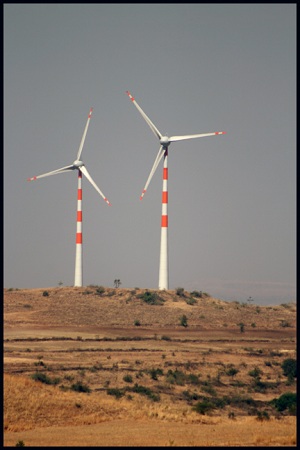In Parts of India, Wind Energy Proving Cheaper than Coal
 Due to the cost of rising coal prices and a decrease in the cost of wind power (which has dropped considerably in recent years), the cost of wind power in some parts of India has fallen below that of electricity from coal power plants (not even taking health or global warming externalities into account).
Due to the cost of rising coal prices and a decrease in the cost of wind power (which has dropped considerably in recent years), the cost of wind power in some parts of India has fallen below that of electricity from coal power plants (not even taking health or global warming externalities into account).The cost of wind power is primarily dependent on the average wind speed in the location where wind turbines are to be installed. It is also dependent on the cost of labour required to install and maintain the wind turbines. Another factor that affects the cost of wind farm electricity is the initial price to buy the turbines.
This cost improvement mentioned above is due to increased turbine efficiency in recent years, and the increasing viability of generating electricity at lower wind speeds, according to Greenko Group Plc.
“Today we’re able to supply energy below the cost of conventional power,” said Mahesh Kolli, president of Greenko, which is building wind projects with General Electric Co. in India. “That’s the key development for this year.”
According to Renewable Energy World, this wind energy cost reduction means that new wind farms in India using these improved turbines can survive and flourish without a state subsidy (or a price on CO2 and other pollutants).
Greenko started operating its first wind project in Ratnagiri in Maharashtra state this year, using 1.6-MW General Electric wind turbines, and “achieving efficiencies never before seen in India.” That wind farm reportedly achieves a 30% capacity factor*. New wind turbines can achieve a capacity factor of over 50%.
In India, 57% of their power plants’ power generation capacity is coal power plants, and 31% of it renewable power plants, including hydroelectric plants. Hopefully this tipping of the scales gets a lot more renewable energy on the grid soon.
You can return to the main Market News page, or press the Back button on your browser.

